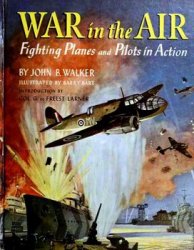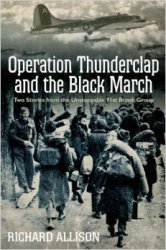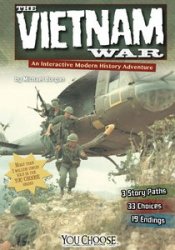The conclusion of the Six Day War, with its resultant trauma for the Arab world, created an atmosphere, particularly in Israel, indicating that an end had been reached in the wars of Israel with the various Arab countries. Indeed, as was pointed out at the end of the previous chapter, the imminent opening of peace negotiations was envisaged. From a military point of view, Israel was now in a much stronger position than it had ever been and, in the eyes of most Israelis, this fact enhanced the prospects for peace negotiations. This time Israel would be negotiating from strength.
As a result of the Six Day War, the area controlled by Israel had increased some four-fold. In the north in the Golan Heights, the Israeli forces controlled an area some twenty miles in depth, which removed the Syrian artillery threat to Israeli villages, and furthermore increased Israeli control of one of the three main sources of the River Jordan. In the West Bank of the Jordan, the front-line had hitherto cut the capital city of Jerusalem in half and had brought Tel Aviv, the centre of Israeli commerce and the area of Israel’s densest population, to within artillery range of the armistice lines. It created a ten-mile-wide waistline opposite Natanya. Now, Israeli forces were deployed along the natural frontier of the River Jordan. A Jordanian attack against Israel would now have to take into consideration not only the river crossing, but an ascent of some
3,000 feet over a distance of some 40 miles into the Judean Hills through most inhospitable barren territory before reaching any centres of population. In the south, Israel controlled the Sinai Desert, which included at its southernmost tip the strategically placed Straits of Tiran at the entrance to the Gulf of Aqaba. The area included the oilfields of the Gulf of Suez capable of supplying a high percentage of Israel’s oil requirements. Most important of all, this vast wasteland provided an ideal buffer to guarantee Israel’s security against any recurring threat from Egypt. The electronic warning period given to Israel in respect of an air attack from Egypt had increased four-fold, to sixteen minutes. (Indeed, the vital importance of the Sinai as a buffer area was demonstrated when the Egyptians attacked across the Suez Canal in 1973.)
Israel’s belief that the war had come to an end and that peace would now reign along the borders was soon dispelled. Three weeks after the conclusion of hostilities, the first major incident occurred on the Suez Canal. Thus began a war, known as ‘The War of Attrition’. While not as spectacular as a conventional war (and it did not therefore attract worldwide attention), this was waged from 1967 until the cease-fire between Israel and Egypt in August 1970. Many actions in this ‘war’ were to prove
To be complete innovations in the history of warfare. The anti-aircraft defence system that protects the Soviet empire was tested out by the Israel Defence Forces flying Western-type aeroplanes, and was found wanting. The battlefield around the Suez Canal became a major proving ground for the military equipment of the two superpowers. In many ways — from the point of view of the development of military equipment and science — the War of Attrition was perhaps more significant than other struggles in which Israel was hitherto involved.
At the beginning of July 1967, the United Nations Security Council was in session on the Middle East conflict. The Soviets emphasized to the Egyptians, with an eye to the discussions in the United Nations, that it was important to create the impression that the war was not over: hence Israel would be pressurized to withdraw in order to enable the Egyptians to open the Suez Canal to international shipping. The first shots were fired on Saturday 1 July 1967. On a number of occasions, Egyptian forces ambushed Israeli patrols moving along the exposed narrow dyke on the Suez Canal; at places but a few yards wide, this links Kantara in the south with Port Fouad in the north. Egypt chose this area, a narrow neck of land some eighteen miles in length, bordered on one side by the Suez Canal and on the other side by swamps, in which to engage Israeli forces that would be exposed and hence be without any possibility of retaliation.
On 1 July, an armoured infantry company commanded by Major Uriel Menuhin advanced northwards along the dyke in order to drive off an Egyptian ambush, which had sited itself on the eastern bank of the Suez Canal in the general area of Ras El-Aish, some ten miles south of Port Said. Despite the fact that it was attacked by artillery and armoured fire from the west bank of the Canal, the Israeli force continued to carry out its mission and drove off the Egyptian forces. However, in the ensuing artillery engagement. Major Menuhin was wounded. Despite his wounds, he continued to command the force and engaged the units on the other side of the Canal, directing the fire of his tanks. In this operation, he was wounded a second time. As the Israeli force was in the process of withdrawing on the evening of the second day, having accomplished its task, the half-track carrying the wounded company commander was hit again and he was killed. In total, the action cost the Israelis one killed, the unit commander, and thirteen wounded.
Thus it continued, battle being joined with the Egyptians intermittently engaging Israeli patrols along the eastern bank of the Canal with flat-trajectory fire from tanks, coastal artillery fire from Port Said, and field artillery fire. At times, these actions escalated, and Israeli air units were thrown into the combat to deal with the sources of Egyptian fire. During one of these engagements, 120 Egyptian troops attempted to cross in rubber dinghies at the northern end of the Canal, but they were repulsed by Israeli forces. The fighting that broke out in this area included naval operations off the coast of Sinai opposite Rumani, in which the Israeli naval flagship Eilat and two torpedo-boats were engaged by Egyptian torpedo-boats. Two of the Egyptian torpedo-boats were sunk in one such engagement.
On 11 July, Israel and Egypt agreed to establish United Nations observation posts on both sides of the Canal. Israel maintained that the cease-fire line ran down the middle of the waterway. Accordingly, on 14 July, Israeli naval dinghies were lowered into the Canal to the south of Kantara as a test probe to see if the Egyptians would accept the Israeli definition of the cease-fire line. The Egyptians opened fire on them and there followed a major tank and artillery exchange with the Israeli Air Force also joining in the battle. Israeli dinghies and Israeli ships were hit. In the air battles that ensued, four Egyptian MiG-17s and three MiG-21s were shot down by the Israeli Air Force. Israel suffered some nine men dead and 55 wounded. This phase came to an end in mid-July, and thereafter no naval forces were introduced by either side into the Canal.
Gradually, life settled into a routine along the Canal, and relationships even began to develop between the forces on the opposing sides. Visitors at the time were amazed to see soldiers of the two armies sitting peacefully engaged in fishing, each on their side of the Canal. In many cases, the troops talked to each other and exchanged at first epithets and later pleasantries across the Canal.




 World History
World History









